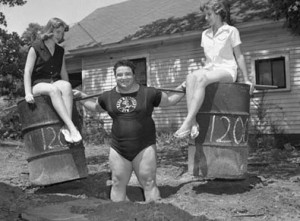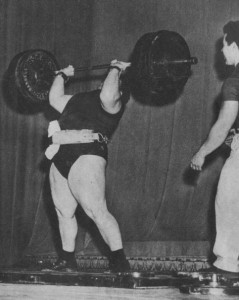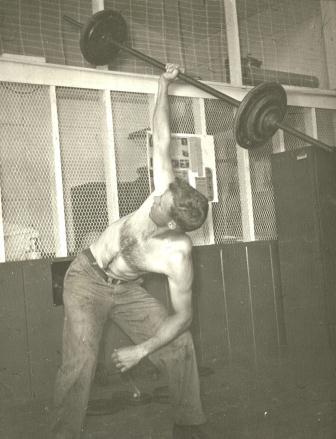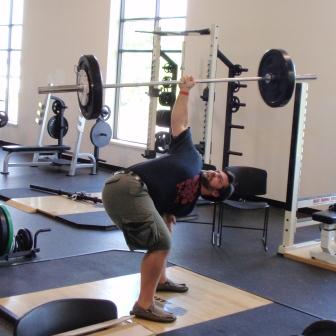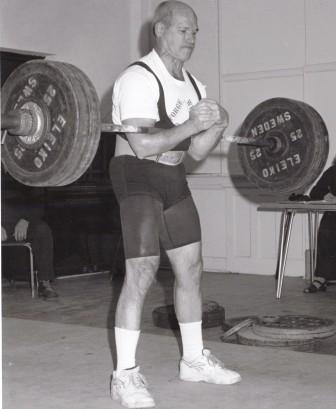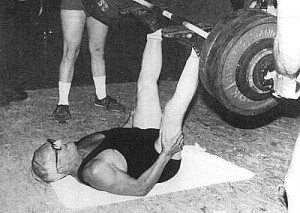Rules for the Anderson Squat
by Thom Van Vleck
Let’s take a look at one of the new lifts for the Old Time Strongman Nationals to be held Oct. 16 at the JWC Training Hall in Kirksville, Missouri. First, let’s review what the “Old Time Strongman” is before we talk about this brand new lift. Old Time Strongman in the USAWA will included lifts popularized or used by strongmen of years past. The lifts must be loadable (So the bar can be loaded to any weight so any skill level can make the lift and not just have a heavy apparatus with a set weight). The idea is that you will have a strongman contest that can be contested by a wide variety of skill levels and ages.
Today’s focus is on the “Anderson Squat”. Paul Anderson, one of the greatest strongmen of all time, was famous for his leg strength. Ol’ Paul had a lot of unorthodox training techniques often born out of necessity (in other words, “he didn’t have the proper equipment so he just rigged something up and lifted it!”). One of the more famous lifts he employed was squatting barrels filled with junk from a hole in the ground. The story goes Paul loaded it and dug a hole deep enough he could get under it and do a partial squat. He would then throw some dirt in the hole, slowly filling it up, so that he would have to get a little lower each time to complete the lift. I found a great photo of Paul doing the lift and evidently that day he was short on iron so a couple of pretty girls volunteered! Don’t worry, if we run low on weights at the meet, I’ll be happy to climb on top for extra weight!
A squat (with a standard Olympic bar) done from a dead stop from a height not over two thirds the height of the lifter. Squat is completed when the knees are locked and the lifter is standing erect. Time limit of 1 minute is given for each attempt meaning the lifter may reset as many times as necessary to complete the lift. Knee wraps or knee sleeves will be allowed. An official will give a command to end the lift.
The uniqueness of this event is doing a squat from a dead stop. It is also the challenge of it! It will be interesting to see what kind of numbers we can put up in this event….and I don’t think Paul will have anything to worry about in regards to anyone coming close to breaking his records in this style of lifting.
